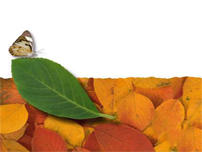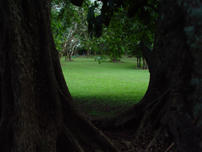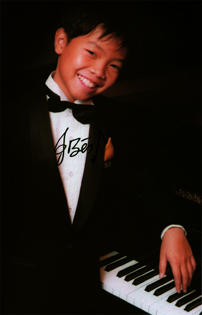Bereavement and Separation

The following reflection was delivered as a homily on July 12, 2004. It was exactly three months after my first experience of losing a loved one.
Not Peace but Division [A reading from the Gospel of Luke ]
49"I have come to bring fire on the earth, and how I wish it were already kindled! 50But I have a baptism to undergo, and how distressed I am until it is completed! 51Do you think I came to bring peace on earth? No, I tell you, but division. 52From now on there will be five in one family divided against each other, three against two and two against three. 53They will be divided, father against son and son against father, mother against daughter and daughter against mother, mother-in-law against daughter-in-law and daughter-in-law against mother-in-law."
The nearest experience of separation I had was the death of my father. I have not really shared with you except for a few about this experience. I was waiting for what I thought would be the opportune time to share this with you. Now it seems very providential that our Gospel talks about just the right ingredient about this theme.
It's exactly three months now since my father passed away. Somehow, as I glance back I can regard this event as a jewel or a sign post which I will always take with me wherever I go. After three months, I could feel that my experience has matured enough, and it is no longer just for me alone but it is meant to be shared with all of you too.
My father died on Easter Sunday. I was in
It was Fr. Tom, who finally broke the news together with the full support of my batch mates. We were busy having our dinner when I noticed Fr. Tom, Terence and Gil huddling in one corner. I thought at first Fr. Tom was divulging an intelligence report about the Chinese government who already might have known about our secret Jesuit identities. Jeff and I, clueless and wondering what was happening, were the last ones to be called.
“I received news from your sister that your father succumbed to urosepsis or blood poisoning. He passed away on Easter Sunday... Isn’t that a good time to go? For now you can ready your things and we will try to get you the earliest possible flight back to the
Overwhelmed with mixed emotions as well as very strange feelings, I did not know what words to say. I was in a temporary state of shock. When I was alone in my room the only thing that facilitated the tears to stream down was the newly bought mahjong set that I was holding close in my arms. That was my father’s last request when I last visited him at the Manila Doctors’ Hospital the night before I left for
However, I was also surprised with my own reactions at that time because it seemed I was quite alright despite the fact that I just lost someone very close to me. I came out very strong, and in control and could still afford to crack jokes at times.
I remember vividly when my room mate Richard was watching me pack my clothes. He noticed perhaps my reactions, that was why he asked me an unguarded question, “Kuya, close ba kayo ng Dad mo?” Surprised, I immediately answered, “Siyempre naman. Bakit mo natanong yan?”
“Kasi naisip ko lang na kung ako ang nasa situwasyon mo ngayon, I think I will not be as calm as you are now. Maybe I will not be as strong.”
Then, I tried to throw back the question to him, “Ikaw kuya close rin ba kayo ng Dad mo?”
 The event was a totally new and strange encounter for me. At first, it was very difficult to accept and believe. The difficulty is in the fact that you are very close to the person like flesh and blood. Someone whom you just talked to recently appears still so fully alive while recalling your latest conversation and then all of a sudden the person dies. You still vividly recall in your mind the tone of his voice, his smile, his laughter. At first it was very unimaginable too the fact that someone’s body would go through decay.
The event was a totally new and strange encounter for me. At first, it was very difficult to accept and believe. The difficulty is in the fact that you are very close to the person like flesh and blood. Someone whom you just talked to recently appears still so fully alive while recalling your latest conversation and then all of a sudden the person dies. You still vividly recall in your mind the tone of his voice, his smile, his laughter. At first it was very unimaginable too the fact that someone’s body would go through decay.
This kind of feeling persisted throughout the past weeks and months. I even consulted some of my Jesuit brothers for some healthy tips on grieving because I told myself that I cannot afford to undergo again another PSI in order to address that. Some of them have told me that the process is unique from person to person. It is like a metamorphic stage that each caterpillar has to undergo before it turns into a colorful butterfly. My father died but a part of me died also. I have undergone a phase of my life like a cocoon. And grieving is like that – a phase of the temporary life. Something has been taken away from my hands in order that I will be able to carry some more.
I guess this is the message of the Gospel for today. Separation in the family, in whatever form it will take, is unavoidable. It has to come to pass. But the irony of it all is so that we could take on greater things.
If you ask me if the strange feeling still persists until this day, it does. My father’s voice still rings a resonant tone in my mind. In fact now, I often see more and more his likeness in other people whether in the person of those whom I meet along the street, a taxi driver, a handicapped.
My father was separated or cut from me but only to be closely knitted once again in a transformed manner. And I guess we just have to learn how to become more at home with this queerness, strangeness of our God, a God of contradictions, and creative tensions.
Often for mourners, faith does not comfort; it confounds. And that we stay with our faith is what real hope is all about. James F. Keenan, SJ



















